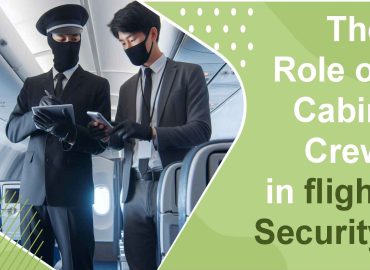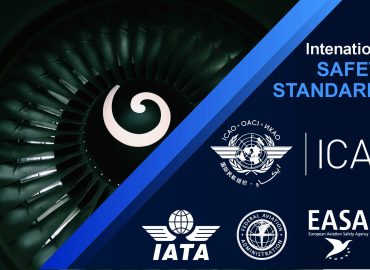- By maverik
- April 23, 2024
- Comments (0)
The role of cabin crew members extends far beyond providing in-flight service. They are primarily responsible for ensuring the safety and well-being of passengers throughout the flight. Here’s a comprehensive look at how cabin crew members ensure passenger safety, covering various aspects of their training, responsibilities, and actions.
1. Rigorous Training and Certification
Cabin crew members undergo extensive training to prepare for any situation that may arise during a flight. Key components of their training include:
- Safety Procedures: Learning emergency procedures, such as evacuations, fire-fighting, and water landings.
- First Aid and CPR: Training in basic and advanced first aid, CPR, and the use of medical equipment onboard.
- Security Training: Understanding and implementing security measures to handle potential threats, including dealing with unruly passengers.
2. Pre-Flight Safety Checks
Before passengers board, cabin crew conduct thorough safety checks to ensure everything is in order:
- Equipment Inspection: Verifying that all safety equipment, such as oxygen masks, life vests, and fire extinguishers, are present and functional.
- Cabin Inspection: Checking for any hazards or unauthorized items in the cabin, galleys, and lavatories.
- Briefing: Attending pre-flight briefings to discuss flight details, special instructions, and any potential safety concerns.
3. Safety Demonstrations and Passenger Briefings
Cabin crew members provide vital safety information to passengers before takeoff:
- Safety Demonstrations: Conducting demonstrations on the use of seat belts, oxygen masks, life vests, and emergency exits.
- Special Briefings: Providing additional instructions to passengers seated in exit rows, those with disabilities, and passengers traveling with infants or small children.
- Answering Questions: Being available to answer any safety-related questions from passengers and ensuring they understand the procedures.
4. Vigilant Monitoring During the Flight
Throughout the flight, cabin crew members continuously monitor the cabin to maintain safety:
- Observing Passenger Behavior: Keeping an eye on passengers to detect any unusual or suspicious behavior that could pose a risk.
- Ensuring Compliance: Making sure passengers adhere to safety regulations, such as fastening seat belts, using electronic devices appropriately, and keeping aisles and exits clear.
- Periodic Checks: Conducting regular checks of the cabin, galleys, and lavatories to ensure everything is in order and to address any issues promptly.
5. Handling In-Flight Emergencies
Cabin crew are trained to respond swiftly and effectively to in-flight emergencies:
- Medical Emergencies: Providing first aid, using onboard medical kits, and coordinating with medical professionals on the ground if necessary.
- Dealing with Fires: Quickly identifying and extinguishing fires using fire-fighting equipment and techniques learned during training.
- Emergency Landings: Leading passengers in emergency landing procedures, including instructing them on brace positions and managing evacuations.
6. Post-Flight Safety Responsibilities
Even after the flight lands, cabin crew members have safety responsibilities to ensure ongoing security:
- Supervising Disembarkation: Ensuring passengers leave the aircraft safely and orderly, avoiding crowding and confusion.
- Final Checks: Conducting a thorough inspection of the cabin to check for any items left behind, potential hazards, or security issues.
- Debriefing: Participating in post-flight debriefings to discuss any safety incidents, challenges faced, and improvements for future flights.
Conclusion
Cabin crew members are the unsung heroes of aviation, dedicating themselves to the safety and well-being of passengers. Through rigorous training, diligent pre-flight checks, clear safety demonstrations, vigilant in-flight monitoring, effective emergency response, and thorough post-flight procedures, they ensure a secure flying environment. Their unwavering commitment to safety allows passengers to travel with peace of mind, knowing they are in capable hands.


